#AEM instance setup
Explore tagged Tumblr posts
Text
Mastering Digital Experiences: Adobe Experience Manager Implementation Guide
In today's fast-paced and highly competitive business landscape, digital experiences play a crucial role in shaping the success of businesses. With the increasing shift towards online interactions and transactions, businesses are constantly seeking ways to enhance their digital presence and engage their audience effectively.
Adobe Experience Manager Implementation emerges as a powerful and versatile tool for managing digital content, offering a comprehensive solution for businesses looking to streamline their content management and delivery processes.
Understanding Adobe Experience Manager (AEM)
Adobe Experience Manager Implementation stands as a leading digital experience management solution that empowers businesses to create, manage, and optimize digital customer experiences across various channels.
Its key features and capabilities are designed to offer a seamless and integrated approach to content management, digital asset management, and personalization. AEM's robust capabilities enable businesses to deliver compelling digital experiences that are both engaging and impactful.
AEM facilitates streamlined content management and delivery processes, allowing businesses to efficiently create, manage, and deliver content across various digital channels. It provides a unified platform for content creation, editing, and publishing, thereby enabling businesses to maintain consistency and coherence in their digital messaging.
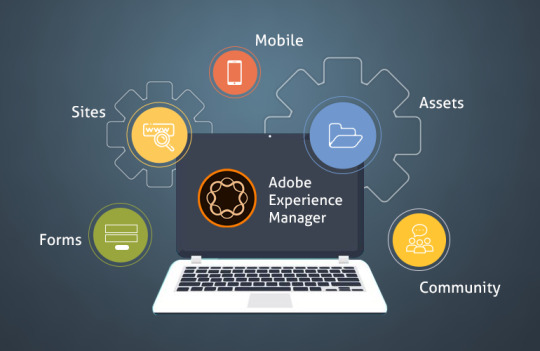
Planning for AEM Implementation
Embarking on an AEM implementation requires thorough planning and preparation to ensure the successful adoption and integration of the platform within an organization. The process involves assessing organizational needs, defining implementation goals, and establishing a clear roadmap for the implementation journey.
To prepare for an AEM implementation, it is essential to conduct a comprehensive analysis of the organization's existing digital infrastructure and content management practices. This evaluation will provide valuable insights into the specific requirements and challenges that need to be addressed through the AEM implementation.
Setting realistic and achievable implementation goals is crucial for aligning the AEM implementation with the broader strategic objectives of the organization. By defining clear goals, businesses can effectively measure the success of the implementation and track the impact of AEM on their digital experiences.
Setting Up AEM Environment
Setting up a robust and efficient AEM environment entails understanding the technical prerequisites and best practices for configuring AEM to meet the specific needs of an organization. The technical requirements for AEM implementation encompass considerations related to infrastructure, performance, security, and scalability.
Establishing the AEM environment involves deploying the necessary infrastructure, including servers, databases, and network configurations, to support the seamless operation of AEM. It is essential to adhere to best practices in configuring AEM to ensure optimal performance and reliable operation.
In addition to deploying the necessary infrastructure, establishing an Adobe Experience Manager (AEM) environment involves several key steps to ensure a smooth and efficient setup. One crucial aspect is selecting an appropriate deployment topology based on the specific requirements of the organization. AEM supports various deployment scenarios, such as author and publish instances, as well as a dispatcher for content delivery. Careful consideration of the organization's needs and traffic patterns is essential for determining the optimal topology.
Content Authoring and Management in AEM
AEM offers a comprehensive set of tools and features for content authoring and management, empowering businesses to create and manage digital content effectively. The platform's intuitive user interface and robust authoring capabilities enable content creators to craft engaging and compelling content for diverse digital channels.
Effective content management within the AEM platform involves establishing structured workflows, version control mechanisms, and content governance practices. These elements are essential for maintaining the quality, consistency, and relevance of digital content across various touchpoints.
Structured workflows play a crucial role in effective content management within the Adobe Experience Manager (AEM) platform. These workflows define the sequence of tasks and activities that content goes through, from creation to publication. By establishing clear and well-defined workflows, organizations can ensure that content creation, review, approval, and publishing processes are streamlined and efficient. This not only improves productivity but also minimizes the chances of errors and inconsistencies in the content development lifecycle.
Customizing User Experiences with AEM
Personalizing and customizing user experiences is a key aspect of mastering digital experiences, and AEM provides a rich set of tools and features to achieve this objective. Businesses can leverage AEM's capabilities to create personalized and engaging user experiences that resonate with their target audience.
AEM offers robust capabilities for segmenting audiences, delivering targeted content, and analyzing user interactions to optimize the digital experience. By harnessing these features, businesses can tailor their digital experiences to meet the specific needs and preferences of their audience, thereby enhancing engagement and loyalty.
Optimizing Performance and Scalability of AEM
Ensuring the performance and scalability of an AEM implementation is critical for delivering seamless digital experiences, especially in high-traffic scenarios. Optimizing the performance of AEM involves implementing best practices for caching, load balancing, and content delivery to minimize latency and enhance responsiveness.
Scalability considerations revolve around the ability of the AEM environment to accommodate growing volumes of traffic and content without compromising performance. By implementing scalable architectures and performance optimization strategies, businesses can ensure that their digital experiences remain robust and reliable under increasing demand.
One key aspect of scalability in the Adobe Experience Manager (AEM) environment is the architecture itself. A well-designed architecture provides the foundation for scalability by allowing the system to distribute and handle workloads efficiently. This involves considerations such as load balancing, distribution of resources, and the ability to horizontally scale by adding more servers or nodes to the environment.
Load balancing plays a crucial role in distributing incoming traffic across multiple servers, ensuring that no single server bears an excessive load. This prevents bottlenecks and enhances the system's overall ability to handle increasing volumes of requests. AEM implementations often leverage load balancing technologies to achieve optimal distribution and maintain performance during peak traffic times.
In addition to architectural considerations, performance optimization strategies are essential for achieving and maintaining scalability. This involves fine-tuning various components of the AEM environment, including code, databases, and caching mechanisms. Efficient code practices, database indexing, and caching strategies contribute to faster response times and reduced resource utilization, enabling the system to handle more requests without compromising performance.
Conclusion
Mastering digital experiences through Adobe Experience Manager implementation offers businesses a strategic advantage in today's digital landscape. By understanding the key features and capabilities of AEM, planning for a successful implementation, and leveraging the platform's tools for content authoring, customization, and optimization, businesses can elevate their digital experiences to new heights.
As businesses strive to establish a strong online presence and engage their audience effectively, AEM emerges as a valuable ally in their journey towards digital excellence. By embracing AEM and harnessing its capabilities, businesses can position themselves for success in the digital era, delivering compelling and impactful experiences that resonate with their audience.
Source URL: https://adobe-marketing-automation.blogspot.com/2024/01/mastering-digital-experiences-adobe.html
0 notes
Text
Streamlining AEM Instance Setup and Incremental Builds with Gradle AEM Plugin
This article discusses the process of setting up an Adobe Experience Manager (AEM) instance in a single click using the Gradle AEM Plugin (GAP) developed by Wunderman Thompson Technology. The article highlights the advantages of using Gradle as a building
Problem Statement: How to set up an AEM instance in one click? Can I perform incremental builds on the Maven project? Introduction: Gradle AEM Plugin (GAP) developed by Wunderman Thompson Technology uses Gradle as a building tool. Advantages of Gradle:1. Flexibility 2. Performance Incrementality — tracks the tasks, watches file changes and runs only what is necessary. Build Cache — Reuses…
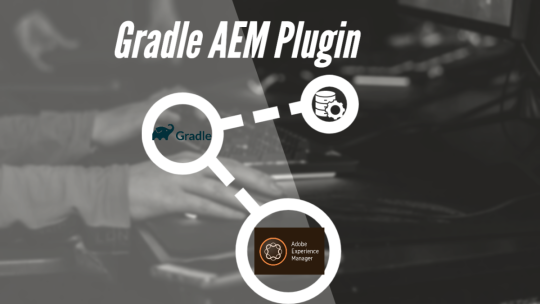
View On WordPress
#AEM#AEM archetype#AEM as a Cloud Service#AEM instance setup#aemaacs#Best practices#Dependency management#Gradle#Gradle build tool#Incremental builds
0 notes
Text
Amazon Web Service & Adobe Experience Manager:- A Journey together (Part-8)
In the previous parts (1,2,3,4,5,6 &7) we discussed how one day digital market leader meet with the a friend AWS in the Cloud and become very popular pair. It bring a lot of gifts for the digital marketing persons. Then we started a journey into digital market leader house basement and structure, mainly repository CRX and the way its MK organized. Ways how both can live and what smaller modules they used to give architectural benefits.Also visited how they are structured together to give more and AEM eCommerce.In the last part we have visited with Adobe Creative cloud part .
In this part as well will see more focus on movement or migration of AEM on-premise to cloud to best fit into this combination.
I hope now you ready to go with this journey to move AEM form On premise to the cloud with its best buddy AWS to enrich a lot of blessing to the digital marketing persons.
So let set go.....................
However this look like very tough and complex task but careful preparation and planning, can drive a smooth migration.
Prerequisite for the migration or pre-preparation:-
a)Archive your data.
b)Allocate sufficient time.
c)Preset the infrastructure.
Planning Before the migration:-
a)Schedule migration.
b)Freeze the content.
c)Test migrations.
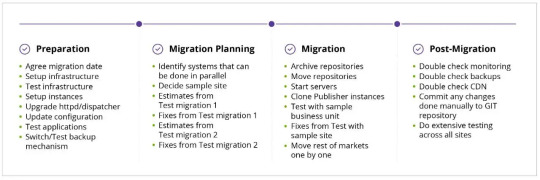
High level view of Migration Process
In case there is no CDN in front of load balancing and the switch needs to be directly on domains. Ensure that both environments are running in parallel and switch as few sites as possible one by one.
Choose a less traffic site with minimal impact and perform switch etc operation on it then start testing. If require then fix manually and then fix in the process.
Before migrating the AEM to AWS , we must know about ways. There are 2 way of the migrations:
1. Without Adobe involvement:-Directly go to AWS (Amazon Web services) and Start AEM instances from there.
2. With Adobe involvement:-But better recommended way is first go to AMS (Adobe Managed Services), and then Adobe host your AEM instances either on AWS as per your request. Here Adobe involve into complete process and manage this entire show.
1st way of migration required following decisions :-
1. Select VM’s as size, type etc.
2. Design the VPN.
3. Create the AutoScaling group(ASG).
4. Create S3 bucket for assets.
5. Create the load balancer (LB).
6. Setup Jenkins and repository.
7. Decide the CDN from cloud front or third party.
Deployment with partner or self-owned
Responsibility owned by organization for the deployment and maintenance , it required skill set of AEM, AWS and devOps as well. Or with AWS APN(AWS partner network) it can be done.
Now we will throughway in AMS(AEM Managed Service) area.
It is managed by AEM in this migration journey . Quicker, easier and more accurate in very short time span. It come with best practices and support of Adobe. Cloud Manager is main part of AEM manage service , it gives administrative features to the organization, for self-manage AEM in the cloud. It includes a continuous integration and continuous delivery (CI/CD) pipeline with performance and security.
AWS EC2 family is best suited for Author and Publish instance , as it require CPU, I/O and memory.
EC2 M5 family have some advance compute power and also provide the network and broad storage of workloads and they have good local storage too.
AEM Dispatcher is provides the additional security , caching, load balancing which require I/O, compute power and memory. Here EBS I/O optimized volume of AWS is best fit.
Adobe recommend minimum 4 core CPU with 16GB RAM

Post-Migration tasks
The CDN switch: Only when all issues are fixed, switch on the CDN side for the less traffic site, testing and rectify issue. Each CDN switch might take from 10-30 minutes to be applied, It is alwayse better to switch in phases at least 3-5 phases.
Load Balancer:- As we know why we are using the load balancer i.e to distribute the traffic.
Classic Load Balancer versus ALB
Switching from a Classic Load Balancer to an Application Load Balancer (ALB) is highly advised as it enables a lot of possibilities.
For example, one ALB can hold multiple certificates, so you can support multiple domains. An ALB can also have different target groups based on the hostname, which allows you to use the same load balancer to handle multiple interactions. For example, 80/443 ports are open for web access and some other ports are open for deployments of target groups based on the hostname.
The Application Load Balancer has deletion protection and, in the case of debugging, you can do a request tracking.
Scaling:- In order to overcome CPU/EC2 is failing then we can configure the auto scaling so whenever when there is health issues on the EC2 it will create the new EC2/CPU and redirect the traffic over there.
Content delivery:- This is used for caching layer in AWS we use cloudFront but you can use 3rd party (CDN).
Dynamic Content:- To incorporate dynamic elements in a static page, the recommended approach is to use client-side JavaScript, Edge Side Includes (ESIs), or web server level Server Side Includes (SSIs). Within an AWS environment, ESIs can be configured using a solution such as Varnish, replacing the dispatcher.
S3 :- It is used to store the binary data and back up management related stuff.
Tools to simplify the migration process and management
Apply server: Using the apply server, you can enable your setup to be much more automated. In some cases, you might not have the luxury of using a fully-fledged configuration management system like Puppet or Chef, and there may be a need for something more flexible with regards to releases and deployments. With the apply server, you don't need that flexibility. It is a tiny tool that can be put into place and whose specific actions you can control. This makes use of HTTP/S and no longer requires SSH access.
Shell2http: Shell2http is a tool that allows you to configure specific commands on a specific host. In practice, we use it to allow people to clear the cache on host machines via URL without giving them access to the machine console. This allows us to configure additional terminal commands that can be used on the machine if necessary.
Puppet (configuration management): We utilize Puppet as our main configuration management tool across our projects. Puppet has a repository in Git that is split depending on the project; based on the machine hostname it detects the environment and role.
Git (version control): Git is our main distributed version control system, which we utilize for maintaining application configuration files and application code within it. We utilize Jenkins to build application packages (that are maintained by Puppet on the machines), which also includes application configuration files.
Jenkins (ci/cd): As Puppet maintains only machine configuration files, the packages built by Jenkins have application configuration files included in them as well. The application configuration files are split by environments and roles to ensure we apply the correct configuration to the correct machine.
Nexus (software repository): Developers upload created packages for deployment to Nexus, the package repository manager. Jenkins then takes the package or packages from Nexus and uploads them to a target machine where it triggers their installation.
Terraform: It enables users to define and provision a datacenter infrastructure using a high-level configuration language known as Hashicorp Configuration Language, or optionally JSON.
Here after this migration , Cloud benefits and feature can leverage but it require a lot of effort and phase. It require handle concerns as well. But there is another player in the market which can make our life easier.
So welcome our new champ in this area AEM OpenCloud.
A very brief intro about AEM OpenCloud(we will see in detail in the coming parts)
It include AEM publish dispatcher , author dispatcher, publisher EC2 instance with auto scaling group which will scale out and in according to the traffic on the dispatcher. Also include the testing capability.
AEM openCloud helps to handle the command execution within the AEM. This include the taking backups, disabling and enabling the crx/de , SAML, deploying the multiple AEM package , AEM security checklist etc. Helps in upgrading the repository.
Security of AEM and AWS :-
Infrastructure level Security:-AWS provide the several services for the security to secure the infrastructure.
Application level Security:- AEM security checklist with the dispatcher security checklist. Mainly security aspect right from the AEM in production mode to using mod_rewrite and mod_security modules from Apache to prevent Distributed Denial of Service (DDoS) attacks and cross site scripting (XSS) attacks.
Automated Deployment :-
AWS provides API access to all AWS services, Many of the various commands to deploy code or content, or to create backups, etc. For CI/CD process with the use of Jenkins as a central hub, invoking AEM functionality through CURL or similar commands.
In this journey we walk through AEM & AWS migration and AEM Open Cloud. So any this combination deliver holistic, personalized experiences at scale, tailoring each moment of your digital marketing journey.
For more details on this interesting Journey you can browse back earlier parts from 1-7.
#aem#adobe#aws#wcm#aws lambda#cloud#programing#ec2#elb#security#AEM Open Cloud#migration#CURL#jenkins the librarians#ci/cd#xss#ddos attack#ddos protection#ddos#Distributed Denial of Service#Apache#cross site scripting#dispatcher#Security Checklist#mod_rewrite#mod_security#SAML#crx#publish#author
1 note
·
View note
Text
AEM Dispatcher
What is AEM Dispatcher?
Get In Touch
AEM Dispatcher is a web server module (provided by Adobe) that sits in front of an AEM instance and caches and delivers content to users. It acts as a proxy server that intercepts requests to AEM and serves cached content whenever possible. AEM Dispatcher can be used to cache both static and dynamic content, and it uses a set of rules and configurations to determine when to serve cached content and when to forward requests to AEM.
Key benefits of using AEM Dispatcher:
Improved performance: AEM Dispatcher reduces the load on the AEM instance by caching and serving content from the cache.
Reduced server load: By serving content from the cache, AEM Dispatcher reduces the load on the AEM server, allowing it to handle more requests and users.
Better security: AEM Dispatcher can be configured to provide an additional layer of security for AEM by blocking harmful requests and limiting access to certain resources.
Scalability: AEM Dispatcher can be used to distribute content across multiple servers, making it easier to scale AEM for large-scale deployments.
How AEM Dispatcher works:
AEM Dispatcher works by intercepting requests to AEM and checking whether the requested content is in the cache. If the content is in the cache, AEM Dispatcher serves it directly to the user.
If the content is not in the cache, AEM Dispatcher forwards the request to AEM, which generates the content and sends it back to AEM Dispatcher.
AEM Dispatcher then caches the content and serves it to the user. AEM Dispatcher uses a set of rules and configurations to determine when to serve cached content and when to forward requests to AEM.
Dispatcher setup for AEM as a cloud service in linux/mac using docker
Prerequisites for Dispatcher Setup
Apache 2.2 web server
Dispatcher Module
Docker setup in local
Installation Instructions
Install Apache web server
Run this command to install the apache package on ubuntu
sudo apt install apache2 -y
Install Docker
Run this command to install the latest docker package on ubuntu
sudo apt-get install docker-ce docker-ce-cli containerd.io docker-buildx-plugin docker-compose-plugin
For Verify docker was installed correctly, Run this comman
docker --version
Execute
aem-sdk-dispatcher-tools-<version>-unix.sh
Run this command to execute script
chmod +x <fileName>
sudo ./<fileName>
Validate the Dispatcher configuration contained in this SDK
$ sudo ./bin/validator full -d out src
This validates the configuration and generates deployment information in out
Validate the deployment information by the Dispatcher in a docker image
$ sudo ./bin/docker_run.sh out localhost:4503 test
This will start the container, run Apache in configuration test mode (httpd -t), dump processed dispatcher. any config (-D DUMP_ANY) and exit.
Confirm that no immutable config file was changed against a docker image ones
$ sudo ./bin/docker_immutability_check.sh src
With your AEM publish server running on your computer, listening on port 4503, you can start the dispatcher in front of that server as follows:
$ sudo ./bin/docker_run.sh out host.docker.internal:4503 8888
Sometimes, You may encounter this error “Waiting until host.docker.internal is available”, to resolve this use your host ip
bin/docker_run.sh src <HOST IP>:4503 8888
Read more!!
0 notes
Text
AEM Developer Exam AD0-E116 Real Questions
If you want to clear AD0-E116 Adobe Experience Manager Sites Developer Expert exam on the first attempt, then you should always focus on your preparation level. PassQuestion AEM Developer Exam AD0-E116 Real Questions are one of the best tools that you can use for the preparation of the Adobe AD0-E116 exam. It will help you clear all concepts and you will have to go through our AEM Developer Exam AD0-E116 Real Questions multiple times to ensure your success in the exam. Our AEM Developer Exam AD0-E116 Real Questions include multiple products including PDF files, practice exam. You will be able to get complete technical assistance and guidelines for the preparation of Adobe AD0-E116 exam so you can pass your exam on the first attempt.
Adobe Experience Manager Sites Developer Expert
Adobe Certified Expert - Adobe Experience Manager Sites Developer certification is the industry-recognized validation of one's proficiency in, and successful implementation of Adobe Experience Manager Developer. It demonstrates to the marketplace that you're able to perform a job role using Adobe's leading solutions. Get recognized for your expertise with Adobe products and differentiate yourself from the crowd.
Exam Information
Exam number: AD0-E116
Exam name: Adobe Experience Manager Developer
Certificate level: Certified Expert
Status: Active
Available languages: English
Number of questions: 50
Formats: Multiple choice and multiple select
Duration: 100 minutes
Delivery: Online proctored (requires camera access) or test center proctored
Passing mark: 64% or 32/50
Price: $225 USD / $150 USD (India)
NOTE: This exam covers AEM 6.4, 6.5, and AEM as a Cloud Service.
Exam Objectives and ScopeSection 1: Configurations (22%)
Identify the steps to create and manage AEM dispatcher configurations
Determine the correct steps to configure multi-tenancy
Explain how to create and manage OSGi configurations
Given a scenario, determine the correct method to Create and manage custom OAK indices
Determine the correct steps to configure OOTB SAML and LDAP integration
Section 2: AEM Development (46%)
Determine the correct steps to implement SPA structure and components
Given a design, create complex components including the HTL, models, and services
Determine the correct method to create unit tests and map mock data
Given a scenario, determine the correct method to develop workflows
Given a scenario, determine the approach for any third-party integration
Determine the approach to implement a headless or hybrid implementation
Section 3: Build and Deployment (8%)
Identify the steps to set up and maintain front-end and back-end dependency management
Determine the correct usage of each archetype when building projects
Section 4: Environment Maintenance (24%)
Given a scenario, determine the steps required to manage AEM environments
Explain the setup steps around release management
Recommend & implement solutions to sync content/configurations across AEM environments
Determine the steps required around planning and implementing AEM upgrades and repository migration activities/tasks
View Online Adobe Experience Manager Sites Developer Expert AD0-E116 Free Questions
There are performance, stability, and security issues with an installed AEM instance. What should a developer do to fix these issues? A.Delete and reinstall the AEM instance. B.Install Adobe-provided Apache configuration file. C.Stop, clear cache files, and restart the AEM instance. D.Install service pack updates from package share. Answer: D
What is the artifact ID of the maven dependency that contains all core AEM APIs? A.core-jar B.api-jar C.aem-jar D.uber-jar Answer: D
A developer installs the latest Service pack to a local AEM author instance. How should the developer install this package on the publish instance? A.Replicate from package manager of publish instance B.Use upload/install from OSGi console of publish instance C.Replicate from package manager of author instance D.Use upload/install from OSGi console of author instance Answer: C
A developer is working on a project locally and needs to install packages manually. The deployments to the localhost must be automated to speed up development. This functionality must be toggled on and off, depending on the needs of the developer. Which step should the developer take to achieve this? A.Configure the maven install plugin by defining the target URL, username and password as maven properties. B.Add a maven profile and configure the content package maven plugin within this profile C.Write a script that does a PUT call to AEM each time maven builds a new package D.Run maven with the deploy phase. Maven will install the package on all local AEM instances running without further configuration Answer: B
A custom AEM application is using the PageManager API. What should a developer add to make the application compile and run correctly in AEM? A.a maven dependency to AEM uber-jar to the content package B.a maven dependency tobundle cq-wcm-core to the application bundle C.a maven dependency to AEM uber-jar to the application bundle D.a maven dependency to bundle cq-wcm-api to the content package Answer: C
0 notes
Text
Fare Experience Fragments to Adobe Target with AEM 6.3
Fare Experience Fragments to Adobe Target with AEM 6.3
Hi Everyone.
As of late I have experienced one use instance of XF with adobe target. The issue explanation
was I was having one segment which is having three varieties. What's more, I need to appear
various varieties of the segment to various group of spectators utilizing adobe Target.
So when I start actualizing, I came to realize that single direction to accomplish this is to make a XF
furthermore, make three varieties of that and Export it to Adobe Target.
So This blog just discusses how to Export the Experience Fragment to adobe target.
Requirements:
1. AEM tutorial should be effectively associated with "Adobe Target".
2. In the cloud setups of XF (in page properties), need to design adobe target.
In the past blog we have just made a XF and in AEM 6.4 there is now
a catch accessible in the XF Console and it will legitimately distribute the XF to target.
Be that as it may, My task is utilizing AEM 6.3.2.2 Version, I was not ready to discover the alternative of "Fare to
Target".But when I updated my framework to AEM 6.3.3 then I got the option.But the customer was not constantly prepared about this overhaul so how might we accomplish it with negligible things done on creation.
While investigating this issue, I have experienced not many reports that expresses various words and actually a piece misdirect me.
1. One report says that the essential for this alternative should be "Adobe Experience Manager 6.3 SP2 (or later)".
2. Somebody likewise face a similar issue and raise it to adobe gathering then they request to refresh the occasion (AEM 6.3.2) with one pack "cq-6.3.0-featurepack-24640-1.2.zip" and in the discussion they referenced additionally that "Open a childcare pass to gain admittance to it. It's not yet accessible at Adobe Package share cloud".
3. Other archive says that "This usefulness requires the use of AEM 6.3 Service Pack 3 (6.3.3.0).
Presently the genuine things which I made sense of are:
1. AEM 6.3.2.2 don't bolster XF "Fare to Adobe Target" alternative.
2."cq-6.3.0-featurepack-24640-1.2.zip" bundle is a very little bug fix bundle and can take care of the issue yet it is accessible in packageshare. No compelling reason to raise a pass to adobe.
3. AEM 6.3.3+ variants bolsters the choice however you can make it accessible in AEM 6.3.2 with a very small(2 MB) Bug fix bundle yet your customer wouldn't like to go for the enormous redesign.
0 notes
Text
AEM Online Training With Placement Assistance From SV Tech Hub
AEM Course Overview:
Adobe Experience Manager (AEM) is a content management solution for building websites. This system will make it easy for professionals to manage marketing content and assets and then deliver them to right person at right time. Through AEM customers will experience a user friendly interfaces and built in features. Through AEM one can create web pages by using drag and drop options.

SV Tech Hub provides Online AEM Training with 7+ years of real time expert, real time project and Demo classes online.
About SV Tech Hub:
SV Tech Hub is leading training institute from India with a good placement assistance record. We are supported by industry certified trainers. We will provide online training with job assistance. We provide training on almost all software technologies with the help of MNC working professionals as trainers. Our experienced and highly skilled trainers will guide you with real time use cases and they also help you in resume preparation.
Our AEM Training Features Includes:
Online training by certified trainers
Training with real time scenarios
24/7 access to AEM Course
Detailed course material
Online doubt clarification
What We Offer You?
Experienced faculty from all parts of world who have strong industrial working experience with MNC companies for several years. Our support team will always assist you with resume guidance, interview question and answer sessions, mock interviews etc.
AEM Online Training Course Content:
Course Content - AEM 6.4
Basic: (15 Hours)
Lab 1:
Overview of AEM.
Installation of Author and Publish Instances.
Technology Stack of AEM – Overview.
AEM Consoles Walkthrough – DAM/CRXDE/TOOLS etc.
Lab 2:
Modes of AEM - Classic UI vs Touch UI.
AEM Basic Component development through CRX/DE – Classic UI.
Authoring Basics – WCM Modes.
Dialog Creation – Side Kick Overview, Parsys.
Template Creation and properties definition.
Sample Page creation in Classic UI.
Lab 3:
Sling Framework in depth.
Resource Resolution via different files. (Selector, extension etc.)
Working demo on Sling Resource Resolution.
Lab 4:
Continue Lab 2 for Classic UI:
Enhance component with editConfig.
I-parsys.
Design dialog.
Listeners in dialog.
X-Type –Multi field, Checkbox, Radio Button in dialog.
Lab 5:
Integrating client library to AEM Components.
Handshaking between AEM + FED (Front End dev)
Client Library magnification.
Different Layouts in AEM – Demo.
Sample Banner Component with Text and Image.
Lab 6:
Packaging content – Package Manager
Activation – Page, Code and Activate Tree.
Replication Agents configuration.
Publish Instance Setup.
Lab 7:
Client library options: Embed, dependencies with demo.
Create a component – Accordion using multi field.
jQuery integration in AEM – Different Ways.
Lab 8:
Touch UI – Consoles Demo.
Migration of Lab-4, Component into Touch UI.
Different type of resource Type in Touch UI dialog.
Multifield Dialog creation in Touch UI.
Lab 9:
Project creation using eclipse plugin.
Project creation using maven – archetype.
Deployment in AEM instance.
OSGI Bundle Life Cycle.
Practical: Demo on various states of Bundle in OSGI Container.
Lab 10:
Server Setup in eclipse for Synching.
Vault Plugin Setup in eclipse.
Demo: Packaging vs Sync.
Lab 11:
Introduction to Sightly.
Various data elements.
Practical: Sample Component Creation –> Touch UI + Sightly File.
Lab 12:
WCM Use API in Sightly.
WCMUsePojo Class – Features and available methods
Practical:
Get the dialog Values in POJO class and return to Sightly.
Get the properties of other Nodes.
Lab 13:
WCM Use JS (Server-side JavaScript) - Concept and writing code of POJO in JS file.
JCR API vs Sling API
adapt to () demo.
Resource Resolver – Concept and demo.
Lab 14:
Creation of Services in AEM 6.4.
Configurations, deployment, Reusability – OSGI console
Integrating Services in Sightly.
Lab 15:
Creation of Servlets in AEM 6.4.
Configurations, deployment, Reusability – OSGI console
Advanced: (15 Hours)
Lab 1:
Sling Models in AEM.
Various Injectors (1).
Demo – Sample component creation, pom.xml, replacement of WCMUsePojo with Sling Models.
Lab 2:
Sling Models in AEM.
Various Injectors (2).
Demo – Sample component creation, pom.xml, replacement of WCMUsePojo with Sling Models.
Lab 3:
Overview Sling Model Exporter (Jackson)
Different configuration for sling model exporter
Practical – Sling Model Exporter.
Lab 4:
Schedulers in AEM.
Overview and configuration of schedulers in AEM.
Practical – Sample Scheduler creation.
Lab 5:
AJAX Implementation.
Sample AEM servlet using AJAX implementation.
Lab 6:
Workflow overview with OOTB.
Creation of sample workflow.
Asset workflow walkthrough.
Lab 7:
Creation of Custom workflow
Custom Process Step and Dynamic Participant step creation.
Practical on Custom Workflow.
Lab 8:
Editable Templates in AEM.
Structure vs Initial
Demo of creating Editable template.
Template Type creation.
Lab 9:
Continue Editable Template….
Properties, Policies etc.
Demo of creating Editable template.
Template Type creation.
Lab 10:
Experience Fragment in AEM.
Creation and configuration of Experience fragments.
Practical.
Lab 11:
Content Fragment in AEM.
Creation and configuration of Experience fragments.
Practical.
Lab 12:
Assets Integration in AEM. (DAM)
Organizing assets in folder
Managing renditions, versions, references.
Editing an existing metadata.
Lab 13:
Core Components in AEM.
Walkthrough Navigation, Breadcrumb.
Sample page creation using core components.
Lab 14:
Query Builder in AEM.
Practical – Develop a component having search functionality utilizing the query builder techniques.
Lab 15:
Dispatcher Setup in local instance.
Usage and configuration.
Practical – Caching.
Contact:
SV Tech Hub
USA : +1-909-440-6102
India : +91-9441803173
Email : [email protected]
Visit: https://svtechhub.com/
0 notes
Text
A Deep Dive into Adobe Experience Manager Implementation: Tips and Tricks

Are you ready to unlock the potential of your digital experiences? Look no further! In this article, we're going to take a plunge into the world of Adobe Experience Manager implementation.
Whether you're a seasoned web developer or just dipping your toes into the waters of content management systems, we've got the tips and tricks you need to make your implementation journey a breeze.
Understanding Adobe Experience Manager Implementation
Before we dive into the nitty-gritty, let's make sure we're all on the same page. Adobe Experience Manager (AEM) is a powerful content management solution that empowers businesses to create, manage, and optimise their digital experiences.
From web content management to digital asset management and even personalisation, AEM has you covered.
Tip 1: Laying the Foundation Right
Any successful project starts with a solid foundation, and AEM implementation is no exception. Adobe Experience Manager implementation begins with a thorough assessment of your organisation's needs and goals.
Identify your key stakeholders, understand the scope of your project, and set clear objectives. This groundwork ensures that your implementation journey is focused and aligned with your business objectives.
Tip 2: Choose the Right Components
AEM offers a plethora of components and modules to cater to your specific needs. During the implementation of Adobe Experience Manager, it's crucial to select the right components that align with your goals. Whether you're creating engaging web pages or dynamic forms, understanding the capabilities of each component can save you time and effort down the road.
Tip 3: Embrace Customisation Wisely
While AEM provides out-of-the-box solutions for many scenarios, there are instances where customisation becomes essential. Customisation allows you to tailor the platform to your unique requirements. However, tread carefully.
Over-customisation can lead to complexity and maintenance challenges. When customising your implementation of Adobe Experience Manager, ensure that your changes are scalable and well-documented.
Click Here: Adobe Experience Manager Implementation Service
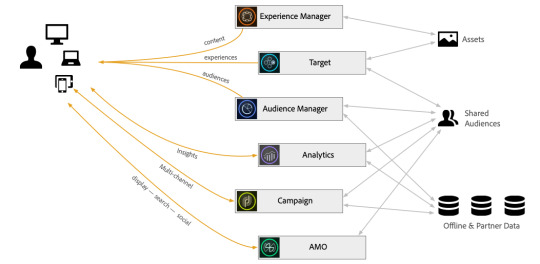
Tip 4: Content is King
In the realm of digital experiences, content reigns supreme. AEM simplifies content creation and management, but a structured approach is key. Leverage the power of content templates and workflows to maintain consistency and streamline the content creation process.
By organising your content effectively within the context of Adobe Experience Manager implementation, you ensure a seamless experience for both content creators and consumers.
Tip 5: Training and Continuous Learning
A successful Adobe Experience Manager implementation doesn't end with the initial setup. Invest in training and continuous learning for your team. AEM's robust capabilities can be harnessed more effectively when your team is well-versed in its features.
Adobe provides a wealth of resources, from online tutorials to certification programs, that can empower your team to make the most of the platform.
In Conclusion
Embarking on an Adobe Experience Manager implementation journey can seem like a daunting task, but with the right approach and a sprinkle of these tips and tricks, you'll be well on your way to creating captivating digital experiences.
Remember, it all starts with a solid foundation, the right components, mindful customisation, strategic content management, and a commitment to continuous learning.
So, go ahead and dive into the world of Adobe Experience Manager implementation with confidence. Your digital experiences are about to get a whole lot more exciting!
Source: https://ivedatadriven.wordpress.com/2023/08/28/a-deep-dive-into-adobe-experience-manager-implementation-tips-and-tricks/
0 notes
Text
Amazon Web Service & Adobe Experience Manager:- A Journey together (Part-7)
In the previous parts (1,2,3,4,5 & 6) we discussed how one day digital market leader meet with the a friend AWS in the Cloud and become very popular pair. It bring a lot of gifts for the digital marketing persons. Then we started a journey into digital market leader house basement and structure, mainly repository CRX and the way its MK organized. Ways how both can live and what smaller modules they used to give architectural benefits.Also visited how they are structured together to give more.In the last part we have visited with AEM eCommerce part .
In this part as well will see more on the another flavor of AEM which is already familiar with cloud side of this combination.
Now ready to go with with Adobe Experience Manager (AEM) Cloud Management aka AEM Cloud.
Adobe Experience Manager (AEM) Cloud Management is SaaS(Software-as-a-Service) that reduced time and costs for provisioning and managing Web Experience Management (WEM) or Web Content Management (WCM) used in digital marketing solutions .
AEM Cloud Management ready to takes advantage of cloud with Amazon Web Services (AWS) Cloud Hosting, to start any AEM digital solutions rapidly and consistently. It save a lot of hardware cost for the initial setup , which required to pay in starting of the solution. This leads quicker to market and global enterprise reach very easy and quickly. So it rapidly engage customers, drive market shares, and focus on innovation.
Adobe is emerging leader in the digital market it evolves a lot of tool to support digital solutions and enrich the user experience. Also it is making footprint to increase the reach with cloud platform . So Adobe emerging its solution available into digital marketing. Here Adobe's own cloud champ is coming into picture "Adobe CC" or "Adobe Creative Cloud".
Adobe Creative Cloud:-
Adobe Creative Cloud(Adobe CC) is collection of very useful tools or software application for different platform i.e.Window ,iOS , Android etc. Basically they support to creative professionals, designers, and marketing professionals to create content.
Many Creative Cloud applications are available individually, or as part of a comprehensive suite.
Adobe Creative Cloud applications are widely used by professionals in digital marketing field for creating , designing and publishing digital marketing solutions for various needs.
Adobe Premiere Pro, is an example of a non-linear video editing tool. Adobe Creative Cloud next powerful applications for print design is InDesign . A well known name is already famous Photoshop , it used by every major magazine publisher and new website.
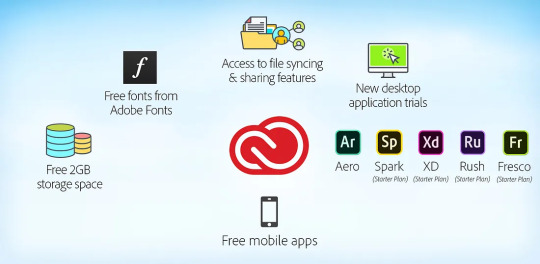
Adobe Creative Cloud is a tool for enabling both creativity and collaboration. The Creative Cloud provides applications to work on projects including video editing, mobile design and even desktop publishing.
Creative Cloud for teams includes the entire collection of Creative Cloud desktop applications including Adobe Photoshop CC, Adobe Illustrator CC, etc. plus services and business features for teams and small to medium-sized organizations.
Main Advantage of Adobe CC:-
Adobe is mainly focusing on digital media and digital marketing.
Adobe decided to focus more on AWS because of strong API set.
AWS allow to deploy, integrate their automation system in to AWS provide very efficient environment for digital market and eCommerce.
Quicker time to market and ROI.
Flexibility in pricing based on subscription.
Scaling on demand to handle future and peak incoming request.
Good relationship with AWS as vendor .
Reduce Opex(operational expenditure) , so more investment on development & innovation.
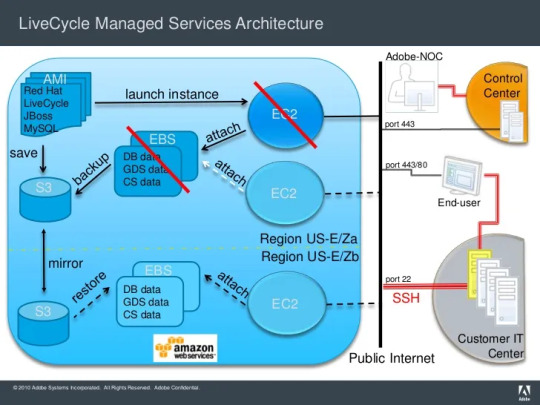
Till here we are able to understand this variation Adobe solution which have cloud ready and giving a lot of feature with benefits .
AEM cloud provisioning
AEM cloud is provisioned on public clouds with one Dispatcher, one Publish instance, and one Author instance by default.
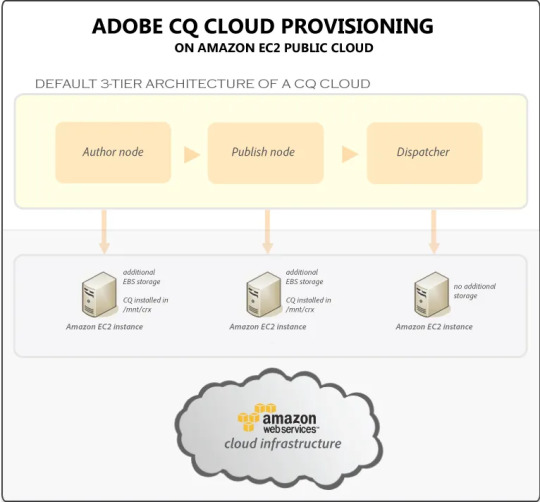
Dispatcher: Amazon EC2 instance launched from an Amazon Machine Image (AMI) .
Publish : Amazon EC2 instance launched from an AMI with Elastic Block Store (EBS) storage. Adobe AEM is installed on the persistent EBS storage in the /mnt/crx folder.
Author : Amazon EC2 instance launched from an AMI with EBS storage . Adobe AEM is installed on the persistent EBS storage in the /mnt/crx folder.
Backups: Backups are triggered using the AEM backup feature and then copied automatically to the Amazon Simple Storage Service (Amazon S3) using your Amazon credentials.
Topologies:
Development/Testing: 1 Author instance, 1 Publish instance, and 1 Dispatcher with no load balancer.
Staging/Production: 1 Author instance, 1 Publish instance, 1 Dispatcher, and a load balancer in front of the Dispatcher.
Creative Cloud Architecture
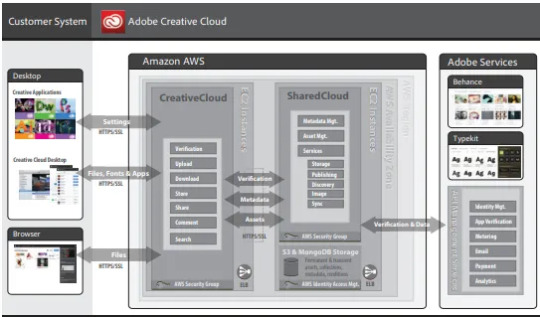
Infrastructure:
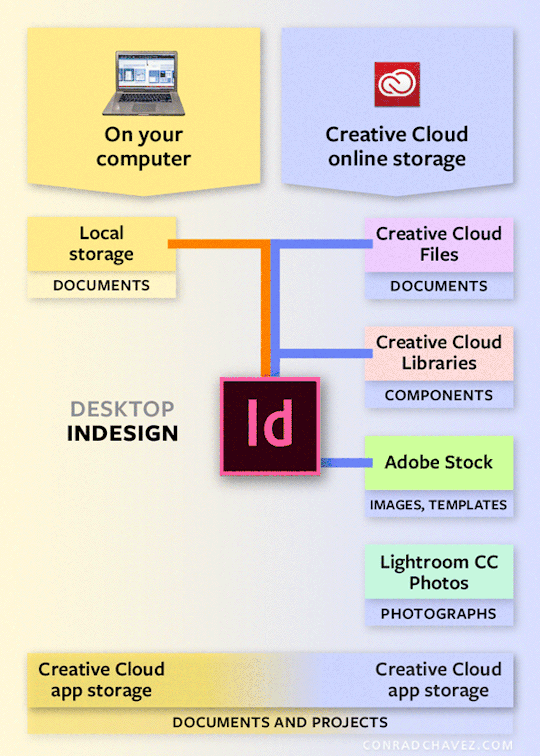
AWS services can use into flowing combination :-
S3, KMS, EC2: ELB, EBS, Snapshoting, Dynamic DB, VPC, SQS, SNS, SES, RDS, ELASTIC CASHE, CLOUD FORMATION, ROUTE 53, Cloudwatch, Cloudtrail, IAM,elastic cache MongoDB, Redshift, kinesis.
In this journey we walk through AEM & AWS for Adobe CC aka Creative cloud to provide solutions to transform your business digitally. So any Adobe CC solution deliver holistic, personalized experiences at scale, tailoring each moment of your digital marketing journey.
For more details on this interesting Journey you can browse back earlier parts from 1-6.
#aem#adobe#aws#wcm#cloud#security#elb#ec2#aws lambda#kinesis#redshift#mongodb#cache#elastic#IAM#Cloudtrail#Cloudwatch#ROUTE 53#CLOUD FORMATION#ELASTIC CASHE#RDS#SES#SNS#SQS#VPC#Dynamic DB#Snapshoting#EBS#KMS#amazon s3
1 note
·
View note
Text
Amazon Web Service & Adobe Experience Manager:- A Journey together (Part-4)
In the previous part (1,2 &3) we discussed how one day digital market leader meet with the a friend AWS in the Cloud and become very popular pair. It bring a lot of gifts they bring for the digital marketing persons. Then we started a journey into digital market leader house basement and structure, mainly repository CRX and the way its MK organized. Ways how both can live and what smaller modules they used to give architectural benefits.
Now will see more on the lower level how the are arrange and manage benefits in the digital marketing area.
More on architectural sizing we will see how the AEM main area like dispatcher etc are organized into the big picture.
Dispatcher is the key family member who is taking care of Performance like matter with content caching and most important matter of load balancing.Also handling some application security aspect.
AEM dispatcher is the primary based on the Apache HTTP web-server modules and installed on the Amazon EC2 instance.
Amazon Elastic Block Store (Amazon EBS)*** I/O optimized volumes is the first choice for AEM dispatcher as it require optimized I/O operation and require memory and computation capabilities.Mapping of dispatcher instance is oneto-one with publish instance in each availability zone.
Availability zone 1:-
AEM dispa11--->publish11
AEM dispa12--->publish12 ------ so on
Availability zone 2
AEM dispa21--->publish21
AEM dispa22--->publish22 ------ so on
***Amazon Elastic Block Store (Amazon EBS) is an easy-to-use, scalable, high-performance block-storage service designed for Amazon Elastic Compute Cloud (Amazon EC2).
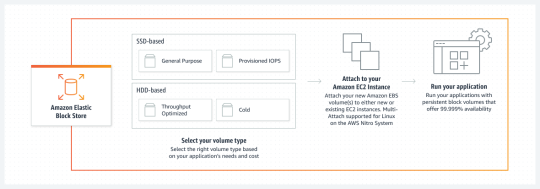
Availability zone 1:-
AEM dispa11--->publish11
AEM dispa12--->publish12 ------ so on
Availability zone 2
AEM dispa21--->publish21
AEM dispa22--->publish22 ------ so on
AEM installation on EBS volumes , two options are available either General Purpose SSD (GP2) volumes or provisioned Input/Output operations Per Second (IOPS) volumes. It provided a specific level of performance and lower latency.
AEM H/W sizing requirement
1)Intel Xeon or AMD Opteron CPU with at least 4 cores
2) 16GB RAM
According to the above hardware sizing, it can best fit into Amazon's EC2 M5.XL instance type. Start with EC2 M5.2XL and as per future workload it can be increased or decreased.
H/W Sizing Recommendations depends on the bellow factors
Network speed
Network latency
Available bandwidth
Computational speed
Caching efficiency
Expected traffic
Complexity of templates, applications and components
Concurrent authors
Complexity of the authoring operation
I/O performance
Performance and efficiency of the file or database storage
Hard Drive
at least two or three times larger than the repository size
Memory
Size of website
Number of concurrent users/sessions
###For more detail got to Hardware Sizing Guidelines | Adobe Experience Manager
Requirement of AEM servers depends uses experience management or DAM digital asset management.
A Minimal setup require five servers for high availability configuration in two Availability Zones and each zone have one pair of dispatcher-publisher and a single author node in any one zone.
2 availability zone--> 2*one pair of dispatcher-publisher--> total 4 server-->plus one for author in any zone--> now in total 5 server required for this minimal setup.
Load Balancing beyond dispatcher
Dispatcher is an internal AEM load balance but from the proper traffic management to handle peak hour traffic external load balancer is required AWS provide various load balance here ELB (Amazon Elastic Load Balancer - AWS) is best fit to control traffic to the dispatcher.
ELB load balancer distributes incoming requests evenly across AZs(availability zones). Also incoming requests can be evenly distributed to all servers regardless of AZs , enable cross-zone load balancing.
Load Balancer for sticky sessions: Authentication is the way to recognize the user with login mechanism,authentication is maintained by a login token.Token information stored under tokens node of the corresponding user node in repository(session id ). In the browser it stored as cookie i.e. login-token.
Here LB(load balancer need to configure for the sticky sessions , so user who authenticated on the server routed accordingly on appropriate server.
sticky sessions-->routing requests --with the--> login-token cookie -->same instance of authentication.
AEM can be configured to recognize the authentication cookie across all publish instances. However, it also requires that all relevant user session information (for example, a shopping cart) is available across all publish instances.
ELB --> in front of the dispatchers to provide a Single CNAME URL for the application.
LB with AWS Certificate Manager, for HTTPS access and to offload.
For security LB is also contributing by moving the publisher instances into a private subnet, which can access only via LB.
LB can translate port as well like default port of web is 80, so all request come to port 80 but AEM publish port is 4503 . LB can translate internally 80 into 4503.
Ensuring High Availability with this superb pair of AWS - AEM
HA (High Availability) is the process to eliminate single points of failure ,ensure continuous operation of digital marketing. The primary goal of HA is to ensure system uptime even in the event of a failure. Some time its referred as Five-nines(99.999%) availability.
Here is we are taking about the HA and five-nines or eliminating single points of failure then it will increase h/w redundancy to create backup systems.
Again the great buddy AWS of AEM from this pair will come as savior and make all the arrangement silently without more noise.
AWS provide strengths to the structure with its recovery feature. Configure each instance in the AEM cluster for Amazon EC2 Auto Recovery(Recover your instance - Amazon Elastic Compute Cloud).
Availability leads recovery as well as handling load or switching in case of failure to correct node.For this the cluster is built in conjunction with a load balancer i.e. AWS Auto Scaling to automatically provision nodes across multiple Availability Zones.

Provisioning of nodes across multiple Availability Zones for high availability is recommended, and multiple AWS Regions is answer to global deployment. AWS provides Amazon Route 53 to perform DNS fail-over for multi-Region deployment, based on health checks.
Continue in next part about more on this journey of both great buddy in software and digital marketing........
#aem#adobe#wcm#aws#programing#EC2#ALB#security#load balancer#HTTPS#SSL#CNAME#Sticky session#Token#authentication#ELB#intel#atom
1 note
·
View note